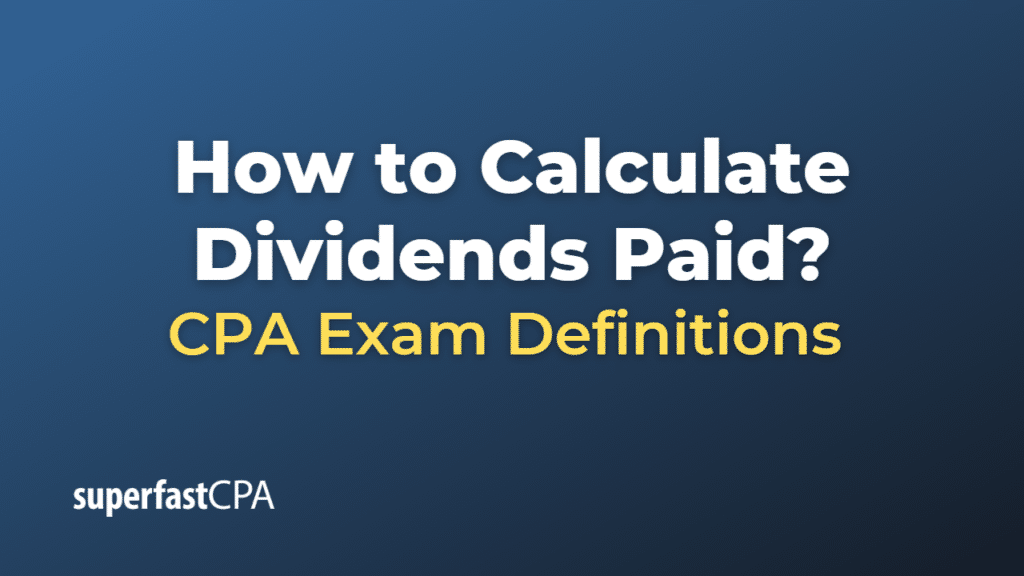How to Calculate Dividends Paid
Dividends paid to shareholders can be calculated using the information available on a company’s financial statements – primarily the Balance Sheet and the Statement of Retained Earnings (or the Statement of Shareholders’ Equity, which usually includes Retained Earnings). It’s important to note that not all companies pay dividends, particularly those in growth phases or industries.
Here is a simple method to calculate dividends paid:
- Find the Retained Earnings at the beginning of the period and the end of the period. You can get these numbers from the Balance Sheet.
- Find the Net Income for the period. This number comes from the Income Statement.
- Use the following formula to calculate dividends paid:
Dividends Paid = Retained Earnings (beginning) + Net Income – Retained Earnings (end)
This formula works because Net Income can be either added to Retained Earnings (if it wasn’t paid out as dividends) or distributed to shareholders as dividends. Thus, if you know how much the Retained Earnings changed and how much Net Income there was, you can find out how much was paid out as dividends.
Keep in mind, this calculation provides the total dividends paid to all shareholders – common and preferred, if the company has both. If you need to know the dividend per share, you would then divide the total dividends by the number of outstanding shares.
Example of How to Calculate Dividends Paid
Suppose we have the following information for ABC Corporation:
- Retained Earnings at the beginning of the year: $500,000
- Retained Earnings at the end of the year: $600,000
- Net Income for the year: $200,000
Using the formula:
Dividends Paid = Retained Earnings (beginning) + Net Income – Retained Earnings (end)
we can substitute the provided figures:
Dividends Paid = $500,000 + $200,000 – $600,000 = $100,000
So, ABC Corporation paid out $100,000 in dividends during the year.
To calculate the dividends per share, you would need to know the total number of outstanding shares. For example, if ABC Corporation has 50,000 shares outstanding, then the dividend per share would be:
Dividend Per Share = Total Dividends / Number of Shares
= $100,000 / 50,000 = $2.00 per share
This means that each shareholder would receive $2.00 per share they own in dividends for the year.













